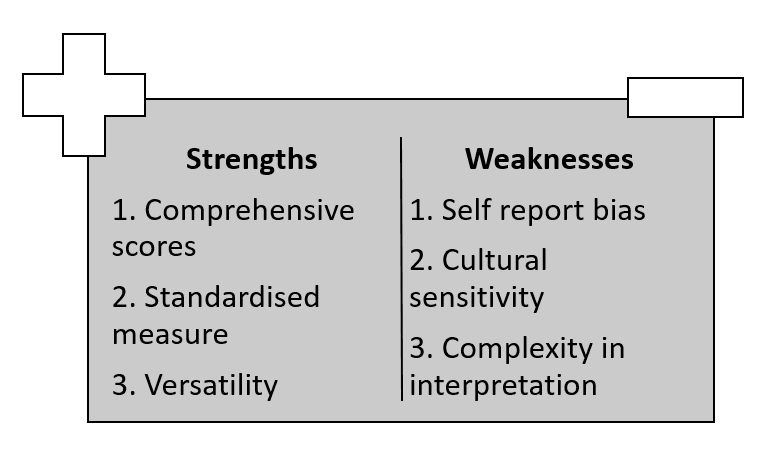Introduction
The State-Trait Anger Expression Inventory (STAXI) is a sophisticated psychological tool developed to understand the multifaceted nature of anger. Designed by Dr. Charles Spielberger, it has become a cornerstone in the fields of clinical psychology, research, and applied behavioral studies. STAXI provides invaluable insights into the nature, intensity, and management of anger, making it indispensable for understanding emotional regulation and its broader implications.
Read More- Psychological Testing
State-Trait Theory of Emotion
The core of STAXI is built on the state-trait theory introduced by Spielberger (1980). This theory posits that emotions can be understood in two primary dimensions-
-
- State Emotion- A transient, situational emotional response to external or internal stimuli. State emotions, including anger, are typically short-lived and vary in intensity.
- Trait Emotion- A stable predisposition to experience specific emotions more frequently or intensely over time. Trait anger reflects a personality characteristic, marking individuals who are more prone to irritation and hostility.
This dual approach allows for a nuanced analysis of anger-
Type 1- State Anger helps identify the immediate triggers and intensity of anger in specific contexts.
Type 2- Trait Anger captures the enduring tendencies that influence how individuals react to situations over their lifetime.
Core Structure of State-Trait Anger Expression Inventory (STAXI)
Staxi breaks down anger into state, trait, and expression dimensions, each offering distinct insights-

1. State Anger (S-Anger)- It measures the intensity of anger at a specific moment. This scale is useful for understanding situational triggers. For instance, someone experiencing road rage might score high on state anger.
Its subscales include-
-
- Feeling Angry (S-Ang/F)– Captures immediate emotional arousal.
- Feel Like Expressing Anger Verbally (S-Ang/P)– Measures the urge to vocalize anger.
- Feel Like Expressing Anger Physically (S-Ang/P)– Reflects physical aggression tendencies.
2. Trait Anger (T-Anger)- It evaluates a person’s predisposition to anger across various situations. High trait anger may indicate a personality trait that predisposes someone to frequent irritation or hostility.
Its subscales include-
-
- Angry Temperament (T-Ang/T)- Measures a general tendency to become angry.
- Angry Reaction (T/Ang/R)- Focuses on anger responses to perceived injustices or frustrations.
3. Anger Expression (AX)
This category provides insights into how individuals express or suppress their anger-
- Anger-In (AX-In)- Reflects the suppression of anger without outward expression. Individuals with high anger-in may internalize their emotions, potentially leading to stress-related disorders.
- Anger-Out (AX-Out)- Measures the externalization of anger, often through verbal or physical aggression. High scores are associated with confrontational behavior.
- Anger Control (AX-Con)- Evaluates the ability to regulate and mitigate anger responses. High scores indicate effective emotional control.
4. Anger Expression Index (AX Index)- A summary measure of overall anger expression tendencies.

Administration of State-Trait Anger Expression Inventory (STAXI)
- Self-report questionnaire.
- It consists of multiple-choice questions with responses on a Likert scale, indicating the frequency or intensity of anger-related feelings or behaviors.
- It is suitable for individuals aged 16 and above.
Read More- Mental Health
Applications of STAXI
The applications of STAXI include-
- Clinical and Therapeutic Uses- STAXIis integral to clinical psychology for diagnosing and treating anger-related issues. It helps practitioners understand- anger’s role in mental health, physical health risks of anger, and therapeutic effectiveness.
- Occupational and Educational Settings- Anger can affect interpersonal relationships, productivity, and decision-making. Staxi is often used to evaluate employees’ emotional coping mechanisms. In schools, Staxi helps identify students prone to emotional outbursts or internalized anger, aiding in the development of targeted interventions.
- Forensic and Correctional Psychology- Anger is a common driver of violent crimes. Staxi helps forensic psychologists assess anger levels in offenders and develop rehabilitation strategies. By addressing anger control, corrective programs can improve behavioral outcomes and reduce the likelihood of re-offending.
- Research and Cross-Cultural Studies- Research shows that anger is a critical factor in stress response and resilience. Staxi has been adapted for various cultural contexts, revealing significant differences in how anger is expressed and managed globally. For instance, Western cultures may show higher anger-out tendencies compared to Eastern cultures, where anger-in is more prevalent (Matsumoto, 2007).
Advantages of STAXI
Staxi’s success lies in its reliability, validity, and practical applicability-
- Comprehensive Scope- Its multifaceted approach captures both temporary and enduring aspects of anger.
- Standardized Measures- High reliability and validity make it a trusted tool in research and clinical practice (Spielberger, 1999).
- Versatility- STAXI can be adapted for use across diverse populations, including children (STAXI-CA) and non-English speakers.
Limitations of State-Trait Anger Expression Inventory (STAXI)
While powerful, Staxi has some constraints that users must consider-
- Self-Report Bias- Respondents may underreport their anger levels due to social desirability bias.
- Cultural Sensitivity- While localized norms exist, they may not fully capture the nuances of anger expression in some cultures.
- Complexity in Interpretation- Proper training is required to administer and analyze STAXI results effectively.

Conclusion
Anger is a universal emotion with profound implications for mental health, relationships, and society at large. STAXI’s ability to deconstruct this complex emotion into measurable dimensions has been revolutionary. By enabling a deeper understanding of anger, it contributes to better emotional regulation strategies, improved interpersonal relationships, and overall well-being.
STAXI is more than just a diagnostic tool; it is a window into the human emotional experience. By addressing anger at its roots, it paves the way for healthier lives and societies. Whether in therapy rooms, classrooms, or research labs, STAXI continues to shape our understanding of one of the most powerful human emotions.
References
Everson, S. A., Goldberg, D. E., Kaplan, G. A., et al. (1997). Anger expression and incident hypertension. Psychosomatic Medicine, 59(5), 447–453.
Matsumoto, D. (2007). Cultural differences in emotion. Review of Psychology, 58(3), 1–12.
Schamborg, S., Tully, R. J., & Browne, K. D. (2016). The Use of the State-Trait Anger Expression Inventory-II With Forensic Populations: A Psychometric Critique. International journal of offender therapy and comparative criminology, 60(11), 1239–1256. https://doi.org/10.1177/0306624X15577932
Spielberger, C. D. (1999). State-Trait Anger Expression Inventory-2 (STAXI-2): Professional Manual. Psychological Assessment Resources.
Subscribe to PsychUniverse
Get the latest updates and insights.
Join 2,971 other subscribers!
Niwlikar, B. A. (2024, December 4). State-Trait Anger Expression Inventory (STAXI) and 2 Important Types of Anger. PsychUniverse. https://psychuniverse.com/state-trait-anger-expression-inventory-staxi/




Pingback: Scholastic Aptitude Test (SAT) Reasoning Test and Its 2 Important Domains - PsychUniverse